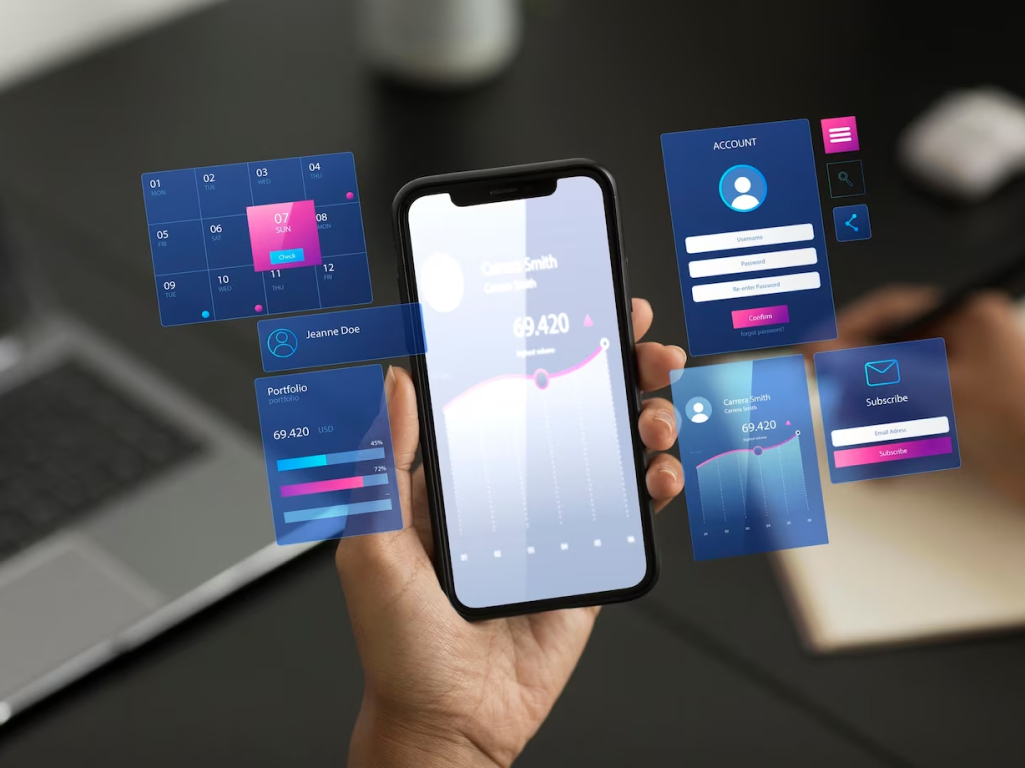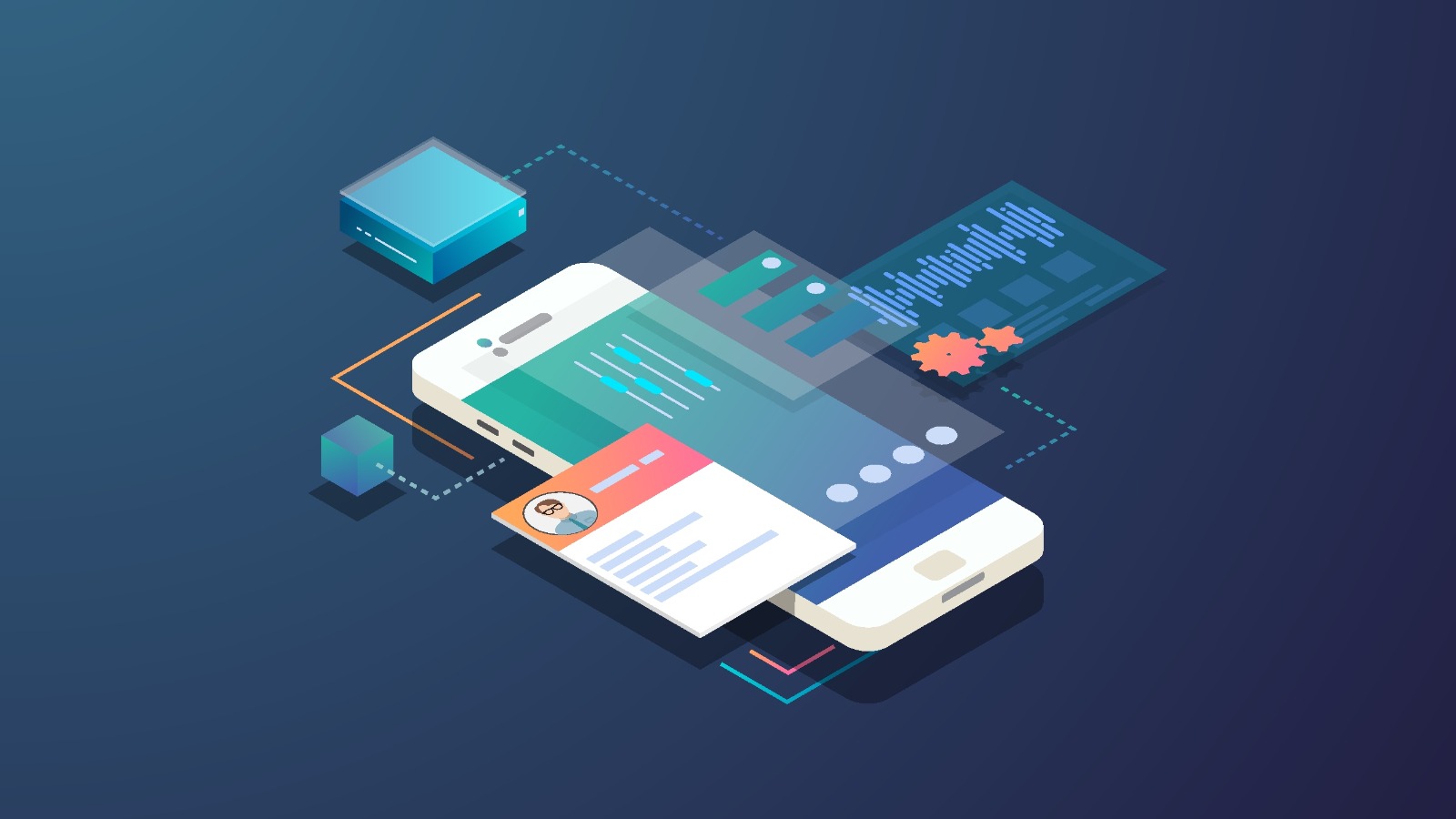Today, custom mobile app development extends beyond the functional design. It also encompasses accessibility, inclusivity, and diversity. These elements serve as ethical guidelines that dictate an app’s usability, market reach, and overall impact. Integrating accessibility ensures mobile application development success. It ensures that mobile apps cater to users with various disabilities, including visual, auditory, motor, and cognitive impairments.
Inclusivity aims to create environments where all users feel included and valued, irrespective of their abilities or backgrounds. Diversity embraces the broad spectrum of human experiences. Developers prioritize these principles in their mobile app development process. They integrate accessibility, inclusivity, and diversity at every stage of the development cycle. Right from planning and design to development, testing, and maintenance, developers stay committed to these principles.
Planning For Accessibility In Custom Mobile App Development
The foundation of a universally accessible app must begin with a thorough understanding of relevant accessibility standards. Some such recognized standards include the WCAG or Web Content Accessibility Guidelines and the ADA or Americans with Disabilities Act. These well-recognized standards provide a comprehensive set of recommendations to help app developers make digital content accessible to users with disabilities. For developers, familiarity with these standards is non-negotiable. It must always be the first step they take towards building accessible apps.
For companies providing mobile application development services, implementing accessibility must incorporate rigorous audits and user research. This helps them to evaluate existing apps or digital products to identify potential barriers that impede mobile app accessibility. These audits are crucial because they highlight areas for improvement and guide developers to prioritize accessibility features.
Concurrently, developers must also conduct user research with differently-abled participants. This direct engagement will acquaint developers with the needs and preferences of diverse users. By providing insights that go beyond specified guidelines, this research will help developers make truly accessible mobile apps.
Developers must proactively set accessibility goals and requirements from the beginning of the mobile app development lifecycle. They must establish specific, measurable accessibility objectives aligned with the WCAG and ADA standards. Integrate these goals into the project’s requirements. This will expand the app’s reach and demonstrate a commitment to inclusivity and social responsibility.
Designing For Inclusivity In Custom Mobile App Development
Mobile apps designed for inclusivity must prioritize flexibility, simplicity, and intuitive navigation. Such apps will cater to a diverse user base. Inclusive design involves creating interfaces that accommodate various interaction modes, like touch, voice commands, screen readers, etc. The thoughtful selection of color schemes and font choices ensures high contrast and readability. It is imperative to utilize colors that differentiate elements for those with color blindness. Further, selecting fonts that are readable across different screen sizes and resolutions helps visually impaired users.
Layout strategies also play a critical role in enhancing usability. Designers must use assistive technologies to create logical, predictable, and efficiently navigable layouts. Further, they must organize content in a hierarchical manner. Interactive elements must be large so they make sense to screen readers.
A mobile application developer must provide ample space to prevent accidental activations. The aim is to minimize cognitive load and physical effort. This will allow individuals with motor impairments or cognitive disabilities can use them. Other essential inclusive practices include incorporating alternative text for images, captions for videos, providing clear, concise labels, etc.
Development Strategies For Diversity In Custom Mobile App Development
Implementing accessible coding practices is mandatory to integrate diversity within mobile apps. Such mobile apps adhere to technical standards and cater to diverse human needs. Further, incorporating assistive technologies, such as screen readers, speech recognition software, and alternative input devices, helps achieve this. Additionally, developers must focus on semantic HTML for web-based apps. They must also use ARIA (Accessible Rich Internet Applications) roles wherever necessary. This will ensure that interactive elements are fully accessible via keyboard inputs. Adopting this approach will make the app’s core functionalities operable for users who cannot use traditional touch-based interactions.
Creating mobile app layouts that are responsive and adaptive is an important requirement of accessible app development. These layouts must fluidly adapt to different screen sizes and orientations. Moreover, developers should implement dynamic text resizing, allowing users to adjust text size according to their needs without disrupting the mobile app layout. Furthermore, integrating accessibility features such as voice-over commands, contrast adjustments, and text-to-speech functionalities will
- Enhance the app’s usability
- Provide a seamless and inclusive user experience
- Allow for personalization
- Adapt to individual user preferences
Testing with real devices and assistive technologies is critical. This hands-on testing ensures that apps not only meet theoretical accessibility standards but also perform well in practical, real-world scenarios. Developers must use automated testing tools to identify and rectify accessibility issues early in the development phase.
Additionally, embracing internationalization and localization practices makes the apps accessible to users from different linguistic and cultural backgrounds. Some practices that a mobile application development agency can integrate include text translation, adapting the UI and content to meet cultural norms, etc.
Testing For Accessibility Compliance In Custom Web Application Development
This represents a critical phase in mobile app development. It helps ensure that applications are accessible to all users, including those with disabilities. Developers must include both automated and manual testing strategies to identify and address accessibility issues effectively.
Automated testing tools play a pivotal role in identifying common accessibility problems. Some accessibility issues commonly identified include missing alt text for images, insufficient color contrast, and incorrect use of ARIA attributes. However, automated testing is not exhaustive. It must be complemented with manual testing to ensure comprehensive coverage.
Manual testing involves hands-on evaluations. Some examples include navigating the app using screen readers, keyboard-only controls, and other assistive technologies. Adopting this approach allows developers to experience the app from the user’s perspective. Hence, they can uncover disability challenges that automated tools might overlook. Manual testing should be exhaustive and simulate various disabilities to ensure the app’s usability across a broad spectrum of users.
Developers and testers must incorporate users with diverse abilities in the testing phase. They will gain real-world insights into how individuals with different disabilities interact with the app. This will further help highlight areas for improvement that technical tests may not reveal.
Committing to rigorous testing for accessibility compliance will ensure the mobile app meets the highest standards of inclusivity and diversity. This not only broadens the app’s user base but also demonstrates a commitment to creating equitable digital experiences. Through diligent testing, developers can achieve the dual goals of technological excellence and social responsibility, contributing to a more inclusive digital world.
Conclusion
Developers cannot overstate the critical importance of integrating accessibility, inclusivity, and diversity into every stage of mobile application development. They must adhere to established standards, engage with diverse user groups, and commit to continuous improvement. With this, developers can ensure the success of the custom mobile app development. Further, this approach also expands the app’s reach. It also reaffirms a commitment to creating equitable digital experiences for all users. Hence, embracing these principles is essential for developers aiming to survive in an accessible and inclusive digital future.



